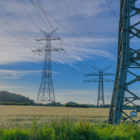It’s important to regularly inspect your pipelines using the best pipeline inspection methods. These checkups use specific equipment to look inside the pipes and identify issues such as cracks, pinhole openings, and rust. Small issues might result in leaks and breaks which are costly and hazardous to address. If they are addressed at the initial stage, they will not get out of hand and cause a lot of harm.
Pipeline checkups also assist you in preventing the situation where you have no service to offer to your customers. If a pipe bursts, it may take quite some time to repair, meaning you have no access to whatever is brought through the pipe. These pipeline inspection methods will enable you to detect any problems with your pipes and ensure that everything is working as it should.
Pipeline Inspection Methods for Early Detection of Issues
Inspecting The Pipeline:
This is the first step, where people look at the outer surface of the pipeline to check for signs of damage. They search for such signs as cracks, leaks, rust, dents, or shifts in the surface surrounding the pipe. Inspecting the pipeline is helpful in identifying issues that can be easily observed on the surface. It can also be done when performing routine checks or after storms.
Smart Pigs:
This method involves using devices known as pigs that move inside the pipeline. These pigs come in different shapes and sizes and can solve problems. Magnetic pigs utilize magnets to locate metal that is lost because of rust. Ultrasonic pigs work with sound waves to determine the thickness of the pipe wall and detect the presence of cracks. Smart pigs use either wireless communication or store the data to provide an overall health assessment of the pipeline.
Water Pressure Test:
This method includes flooding a part of the pipeline with water and putting it under more pressure than usual. The pressure is then monitored, and in case of drops that indicate there are leaks or weak areas involved. Water pressure test is an excellent method to check the efficiency and integrity of a pipeline, and it could be used throughout construction or after a major repair or replacement. This will help one understand that a water pressure test may take pipelines out of service for an extended period, hence the need to plan.
Listening for Sounds:
This technique involves instrumentation that detects sound waves produced by cracks or other faults in the pipeline. The sensors detect sounds produced when a crack is widening or a leak emerges. Given where and how loud these sounds are, an inspector can determine the precise location of the damage within the pipeline. The use of sounds is especially applicable when inspecting the already operational pipelines.
High-Tech Camera Inspection:
This method involves using high-resolution cameras and lasers to inspect the inside of pipelines. High-tech camera tools are inserted into the pipeline and provide a detailed look at the pipe wall. They can detect many issues, including rust, cracks, blockages, and joints not lined up correctly. High-tech camera inspection is one of the valuable pipeline inspection methods for checking pipelines that are difficult to access using other methods or require a comprehensive internal examination.
Conclusion
Pipeline inspection methods help catch problems early and prevent bigger issues. These checkups can be done by looking at the pipeline, sending devices inside, filling it with water under pressure, listening for sounds, or using high-tech cameras. By doing these checkups regularly, pipeline operators can keep our oil, gas, and water moving safely.





